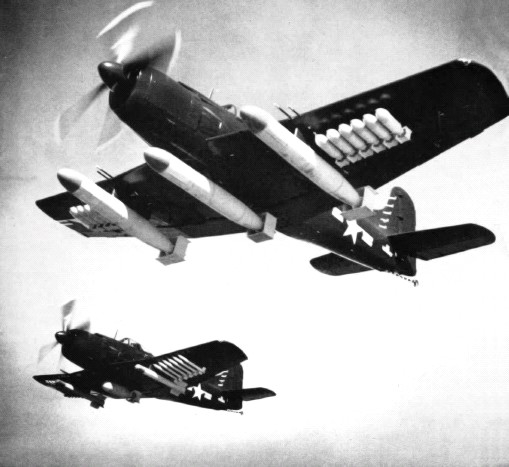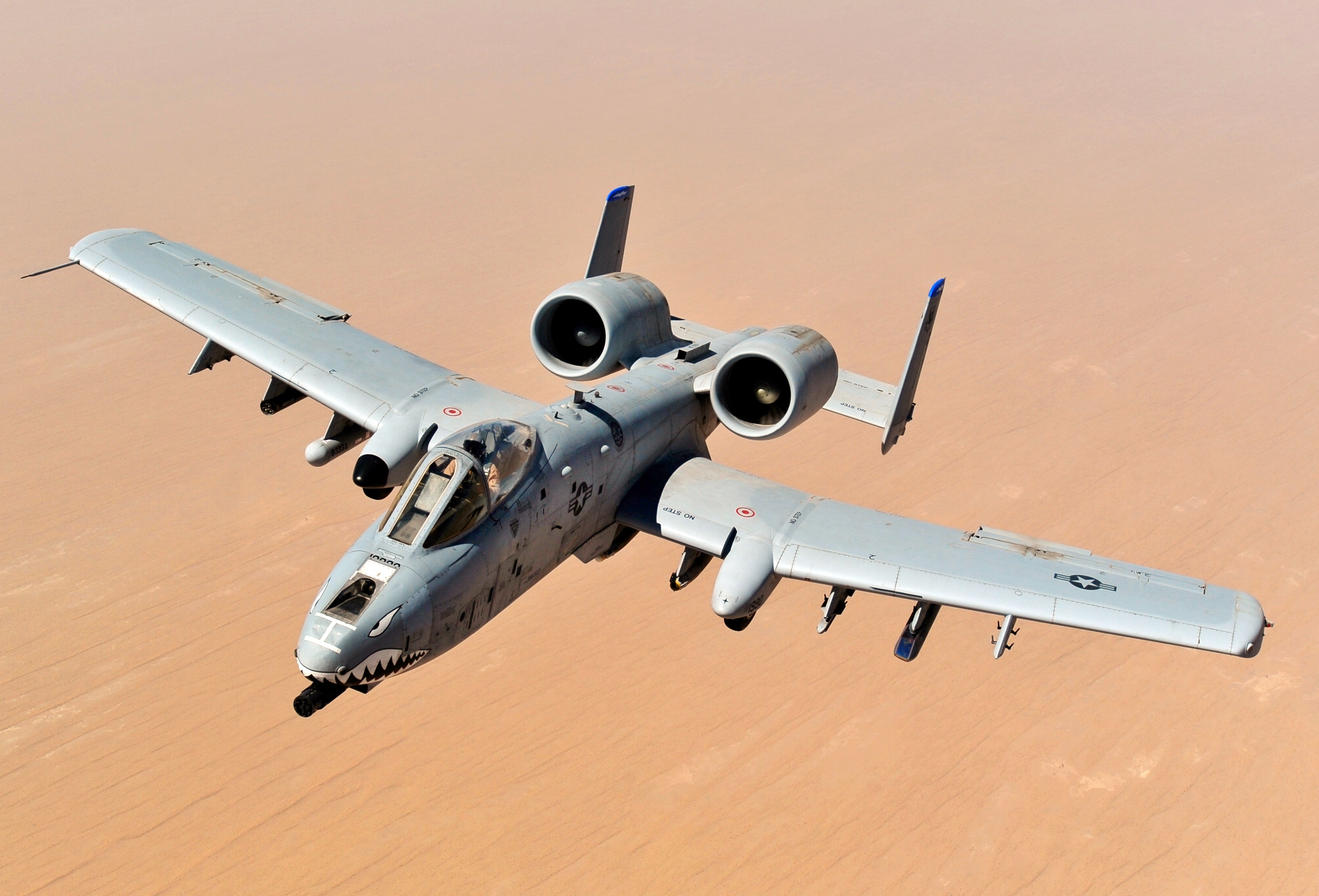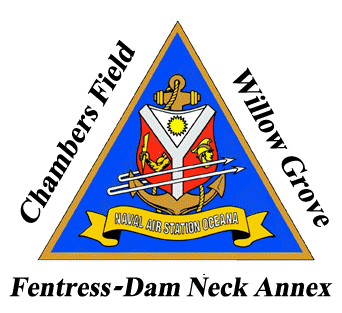|
VA-174 (U.S. Navy)
VA-174 was an Attack Squadron of the U.S. Navy. It was established as Bomber Squadron VB-82 on 1 April 1944, redesignated as VA-17A on 15 November 1946, and finally as VA-174 on 11 August 1948. The squadron was disestablished on 25 January 1950. Its nickname throughout its life was the ''Battering Rams''. A second, unrelated, squadron was assigned the VA-174 designation in 1966. Operational history *15 December 1944: The squadron embarked on , along with other units of Carrier Air Group 82 (CVG-8200, and departed for Pearl Harbor, arriving there on 7 January 1945, following a stopover at NAS San Diego. *16 February 1945: VB-82 participated in the first carrierbased air strikes on Tokyo, flying sorties against installations at Mitsune and Mikatagahara Airfields on Hachijō-jima, Nanpo Shoto. *20–22 February 1945: Squadron aircraft provided air support for the invasion of Iwo Jima. *19 March 1945: Japanese naval vessels in the Inland Sea were attacked by VB-82 aircraft and othe ... [...More Info...] [...Related Items...] OR: [Wikipedia] [Google] [Baidu] |
Martin AM Mauler
The Martin AM Mauler (originally XBTM) was a single-seat carrier-based attack aircraft built for the United States Navy. Designed during World War II, the Mauler encountered development delays and did not enter service until 1948 in small numbers. The aircraft proved troublesome and remained in frontline service only until 1950, when the Navy switched to the smaller and simpler Douglas AD Skyraider. Maulers remained in reserve squadrons until 1953. A few were built as AM-1Q electronic-warfare aircraft with an additional crewman in the fuselage. Design and development In the 1930s and early 1940s, the Navy divided carrier-borne bombers into two types: the torpedo bomber and the dive bomber, each with crews of two or three men. Wartime experience showed that pilots could aim bombs and torpedoes without assistance from other crewmembers as well as navigate with the aid of radio beacons and the development of more powerful engines meant that faster aircraft no longer needed a rear ... [...More Info...] [...Related Items...] OR: [Wikipedia] [Google] [Baidu] |
Battle Of Okinawa
The , codenamed Operation Iceberg, was a major battle of the Pacific War fought on the island of Okinawa by United States Army (USA) and United States Marine Corps (USMC) forces against the Imperial Japanese Army (IJA). The initial invasion of Okinawa on 1 April 1945 was the largest amphibious assault in the Pacific Theater of World War II. The Kerama Islands surrounding Okinawa were preemptively captured on 26 March, (L-6) by the 77th Infantry Division. The 82-day battle lasted from 1 April until 22 June 1945. After a long campaign of island hopping, the Allies were planning to use Kadena Air Base on the large island of Okinawa as a base for Operation Downfall, the planned invasion of the Japanese home islands, away. The United States created the Tenth Army, a cross-branch force consisting of the U.S. Army 7th, 27th, 77th and 96th Infantry Divisions with the USMC 1st, 2nd, and 6th Marine Divisions, to fight on the island. The Tenth was unique in that it had its own Tact ... [...More Info...] [...Related Items...] OR: [Wikipedia] [Google] [Baidu] |
History Of The United States Navy
The history of the United States Navy divides into two major periods: the "Old Navy", a small but respected force of sailing ships that was notable for innovation in the use of ironclads during the American Civil War, and the "New Navy" the result of a modernization effort that began in the 1880s and made it the largest in the world by 1943. The United States Navy claims October 13, 1775 as the date of its official establishment, when the Second Continental Congress passed a resolution creating the Continental Navy. With the end of the American Revolutionary War, the Continental Navy was disbanded. Under the Presidency of John Adams, merchant shipping came under threat while in the Mediterranean by Barbary pirates from four North African States. This led to the Naval Act of 1794, which created a permanent standing U.S. Navy. The original six frigates were authorized as part of the Act. Over the next 20 years, the Navy fought the French Republic Navy in the Quasi-War (1798� ... [...More Info...] [...Related Items...] OR: [Wikipedia] [Google] [Baidu] |
List Of Inactive United States Navy Aircraft Squadrons
There are hundreds of US Navy aircraft squadrons which are not currently active dating back to before World War II (the U.S. Navy operated aircraft prior to World War I, but it did not organize them in squadrons until after that war). To be more accurate: there are hundreds of former U.S. Navy aircraft squadrons which have been disestablished and no longer exist and there are approximately 40 or so U.S. Navy aircraft squadrons which have been deactivated and which currently exist only "on paper" in an inactive status. These disestablished and/or deactivated squadrons are sometimes incorrectly referred to as "decommissioned" squadrons, but proper usage prior to 1998, was that squadrons were "established" and "disestablished" and after 1998, squadrons are "established", "deactivated" and sometimes "reactivated". It has never been correct to refer to U.S. Navy aircraft squadrons as being "commissioned" and "decommissioned", ships are commissioned and decommissioned, U.S. Navy aircr ... [...More Info...] [...Related Items...] OR: [Wikipedia] [Google] [Baidu] |
Attack Aircraft
An attack aircraft, strike aircraft, or attack bomber is a tactical military aircraft that has a primary role of carrying out airstrikes with greater precision than bombers, and is prepared to encounter strong low-level air defenses while pressing the attack.Mortensen 1987, pp. 24–25. This class of aircraft is designed mostly for close air support and naval air-to-surface missions, overlapping the tactical bomber mission. Designs dedicated to non-naval roles are often known as ground-attack aircraft.Gunston 2009, p. 73. Fighter aircraft often carry out the attack role, although they would not be considered attack aircraft ''per se'', although fighter-bomber conversions of those same aircraft would be considered part of the class. Strike fighters, which have effectively replaced the fighter-bomber and light bomber concepts, also differ little from the broad concept of an attack aircraft. The dedicated attack aircraft as a separate class existed primarily during and after Wo ... [...More Info...] [...Related Items...] OR: [Wikipedia] [Google] [Baidu] |
List Of Squadrons In The Dictionary Of American Naval Aviation Squadrons
The tables below cover every one of the 280 squadrons listed in the U.S. Navy's two-volume ''Dictionary of American Naval Aviation Squadrons'' (''DANAS''). Volume 1 covers every squadron in the Attack (VA) and Strike Fighter (VFA) communities from 1935 to 1995. Volume 2 covers every squadron in the Patrol (VP) community from 1922 through 1996. You can see any squadron's ''DANAS'' article by following the link to the cited reference and scrolling down to the appropriate page. You can see its Wikipedia article by clicking the Wikilink in the table; if there is no Wikilink, there is no known article for the squadron. VA squadrons This table shows the 88 VA Attack Squadrons listed iVolume 1of ''DANAS''. A detailed lineage list for all squadrons mentioned in Volume 1 is availabl The articles for these squadrons are in the process of being renamed to parallel the names of articles in the other sections. For example, ''Third VA-34 (U.S. Navy)'' will become merely ''VA-34''. This is an ... [...More Info...] [...Related Items...] OR: [Wikipedia] [Google] [Baidu] |
NAAS Cecil Field
Naval Air Station Cecil Field or NAS Cecil Field was a United States Navy air base, located in Duval County, Florida. Prior to October 1999, NAS Cecil Field was the largest military base in terms of acreage in the Jacksonville, Florida area. NAS Cecil Field consisted of four separate facilities, the NAS Cecil Field Complex (Cecil Field), Outlying Field Whitehouse (OLF Whitehouse), the Yellow Water Weapons Department and the Pinecastle ine CastleElectronic Warfare Target Area / Warfare Range. Including nearly at OLF Whitehouse, the NAS Cecil Field complex consisted of ; in addition, the base leased another . By late 1999, approximately were transferred to the civilian sector in the form of the Jacksonville Aviation Authority, while the remainder was transferred to Naval Air Station Jacksonville. As directed by the Base Realignment and Closure Commission (BRAC) and the U.S. Congress pursuant to BRAC 1993 and BRAC 1995, NAS Cecil Field was decommissioned as an active naval inst ... [...More Info...] [...Related Items...] OR: [Wikipedia] [Google] [Baidu] |
NAS Alameda
Naval Air Station Alameda (NAS Alameda) was a United States Navy Naval Air Station in Alameda, California, on San Francisco Bay. NAS Alameda had two runways: 13–31 measuring and 07-25 measuring . Two helicopter pads and a control tower were also part of the facilities. History In 1927, wetlands at the west end of Alameda Island on the east shore of San Francisco Bay were filled to form an airport (Alameda Airport) with an east–west runway, three hangars, an administration building, and a yacht harbor. The airport site included the Alameda Terminal of the First transcontinental railroad (California Historical Landmark #440). By 1930, United States Army Air Corps operations referred to the site as Benton Field. Pan American World Airways used the yacht harbor as the California terminal for ''China Clipper'' trans-Pacific flights beginning in 1935. The ''China Clipper'' terminal is designated California Historical Landmark #968. On 1 June 1936, the city of Alameda, Californ ... [...More Info...] [...Related Items...] OR: [Wikipedia] [Google] [Baidu] |
NAS Kahului
Kahului Airport is the main airport of Maui in the State of Hawaii, United States, located east of Kahului. It has offered full airport operations since 1952. Most flights into Kahului Airport originate from Daniel K. Inouye International Airport in Honolulu; the Honolulu–Kahului corridor is one of the heaviest-trafficked air routes in the US, ranking 13th in 2004 with 1,632,000 passengers. The IATA airport code OGG pays homage to aviation pioneer Bertram J. "Jimmy" Hogg, a Kauai native and aviation pioneer who worked for what is now Hawaiian Airlines, flying aircraft ranging from eight-passenger Sikorsky S-38 amphibians to Douglas DC-3s and DC-9s into the late 1960s. It is included in the Federal Aviation Administration (FAA) National Plan of Integrated Airport Systems for 2021–2025, in which it is categorized as a medium-hub primary commercial service facility. History Construction started on Naval Air Station Kahului in 1942. After the war, extensive negotiations b ... [...More Info...] [...Related Items...] OR: [Wikipedia] [Google] [Baidu] |
NAS Quonset Point
Quonset Point Air National Guard Station is the home base of the Rhode Island Air National Guard 143d Airlift Wing. Naval Air Station (NAS) Quonset Point was a United States Naval Base in Quonset Point, Rhode Island that was deactivated in 1974. Next to NAS Quonset Point was Camp Endicott at Davisville, home of the Naval Construction Battalions known as the Seabees. Quonset Point also gave its name to the Quonset hut, a standardized temporary structure used by the U.S. military starting in World War II. Former US President Richard M. Nixon went through basic naval officer training at Quonset Point in 1942. History U.S. Navy use Commissioned on 12 July 1941, and encompassing what was once Camp Dyer, NAS Quonset Point was a major naval facility throughout World War II. Beginning in 1943, pilots of the Royal Navy's Fleet Air Arm were trained at Quonset Point to fly the Vought F4U Corsair, which was then brought into service on British carriers. Squadrons such as VS-33 flew anti-s ... [...More Info...] [...Related Items...] OR: [Wikipedia] [Google] [Baidu] |
NAS Norfolk
Naval Station Norfolk is a United States Navy base in Norfolk, Virginia, that is the headquarters and home port of the U.S. Navy's Fleet Forces Command. The installation occupies about of waterfront space and of pier and wharf space of the Hampton Roads peninsula known as Sewell's Point. It is the world's largest naval station, with the largest concentration of U.S. Navy forces through 75 ships alongside 14 piers and with 134 aircraft and 11 aircraft hangars at the adjacently operated Chambers Field. Port Services controls more than 3,100 ships' movements annually as they arrive and depart their berths. Air Operations conducts over 100,000 flight operations each year, an average of 275 flights per day or one every six minutes. Over 150,000 passengers and 264,000 tons of mail and cargo depart annually on Air Mobility Command (AMC) aircraft and other AMC-chartered flights from the airfield's AMC Terminal. History The area where the base is located was the site of the original ... [...More Info...] [...Related Items...] OR: [Wikipedia] [Google] [Baidu] |
NAAS Oceana
Naval Air Station (NAS) Oceana or NAS Oceana is a United States Navy Naval Air Station located in Virginia Beach, Virginia. Nowadays, the station is located on 23.9 km2. It has total of 250 aircraft deployed and buildings valued at $800 million in plant replacement value. The total Navy community (which includes spouses) count for around 20.000 people. The base is under the jurisdiction of Navy Region Mid-Atlantic and is the headquarters of Strike Fighter Wing Atlantic and Carrier Air Wings 1, 3, 7 and 8. As home to all East Coast strike fighter jet squadrons, the Naval Air Station is classified as a master jet base. The airfield is known as Apollo Soucek Field, named after Lieutenant (later Admiral) Apollo Soucek, a Navy test pilot who set the global altitude record in 1930 by flying a Curtiss ''"Hawk"'' biplane to an altitude of 43,166 feet. Constructed in 1941, and officially commissioned in 1943, NAS Oceana has been home to carrier-based aircraft since its i ... [...More Info...] [...Related Items...] OR: [Wikipedia] [Google] [Baidu] |




.jpg)

_docked_at_Naval_Station_Norfolk%2C_in_October_1937.jpg)
